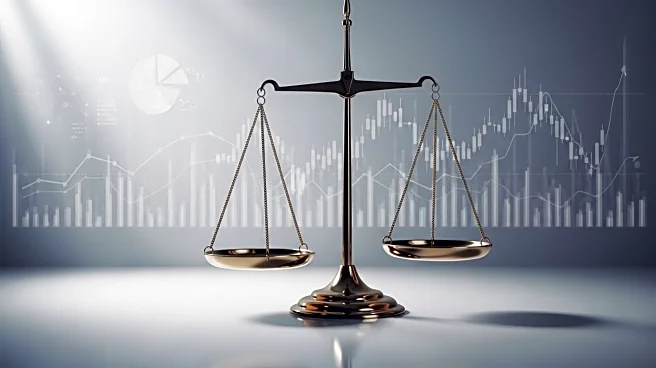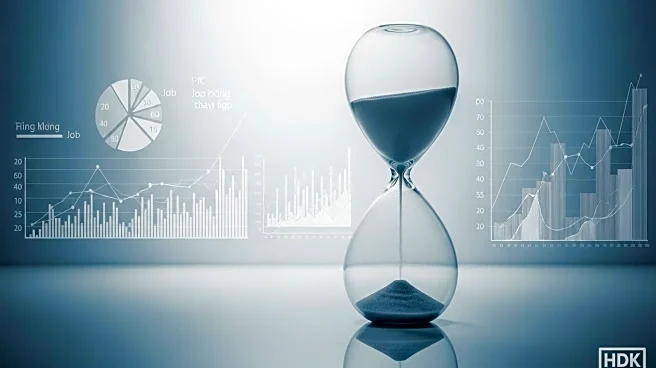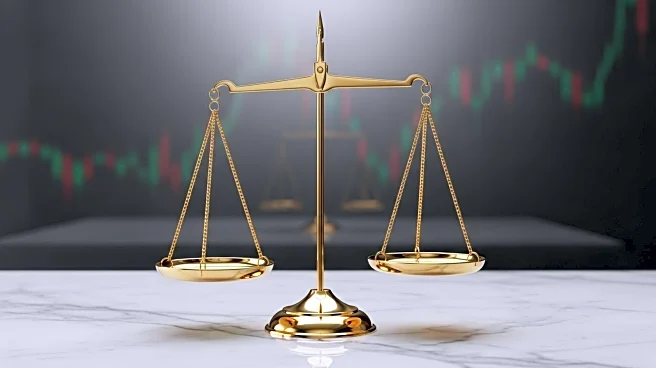What's Happening?
Gold prices have surged to a new record high, driven by investor expectations of further interest rate cuts by the Federal Reserve. Spot gold rose 1.1% to $3,723.81 per ounce, with U.S. gold futures for December delivery climbing 1.4% to $3,758.40. This increase is attributed to heightened anticipation of a dovish monetary policy path, as several Federal Reserve officials, including Chair Jerome Powell, are scheduled to speak this week. Investors are closely monitoring these remarks for insights into future monetary policy directions. The market is also focused on upcoming U.S. core personal consumption expenditure price data, which could influence the pace of rate cuts. The Federal Reserve recently lowered rates by 25 basis points, marking the first cut since December, and signaled openness to further easing.
Why It's Important?
The record high in gold prices reflects broader economic and geopolitical uncertainties, as well as shifts in investor behavior. Traditionally supported by central banks and Asian demand, gold is now attracting Western investors, driven by expectations of falling U.S. rates. This trend is visible in increased gold ETF holdings. The surge in gold prices indicates a growing preference for safe-haven assets amid potential economic instability. The Federal Reserve's monetary policy decisions are crucial, as they impact inflation, currency strength, and overall economic growth. A continued rise in gold prices could affect various stakeholders, including investors, financial markets, and industries reliant on gold.
What's Next?
Investors are anticipating further rate cuts, with a 93% chance of a cut in October and an 81% chance in December, according to the CME FedWatch tool. The Federal Reserve's upcoming decisions and economic data releases will be pivotal in shaping market expectations and gold price movements. Analysts predict that gold could reach $3,900 by mid-2026, suggesting continued upward momentum. Stakeholders, including financial institutions and policymakers, will need to navigate the implications of these developments on investment strategies and economic forecasts.
Beyond the Headlines
The rise in gold prices highlights the shifting dynamics in global investment strategies, with increased interest from Western investors. This trend may signal broader changes in asset allocation preferences, influenced by geopolitical tensions and economic policy shifts. The implications extend beyond immediate financial markets, potentially affecting long-term economic stability and international trade relations.










